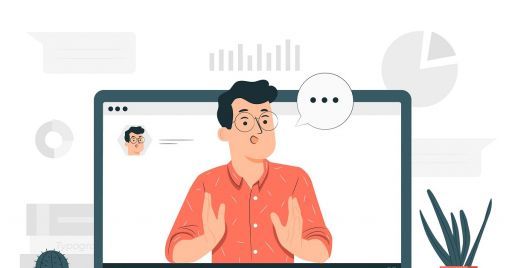
How to record the audio track of an online course

If you want to make your eLearning course engaging for your learners, you need to take care of the audio tracks as well. Here are some tips to make them effective.
We've already talked about audio tracks when we explained how to use them effectively in eLearning courses and how to record quality audio.
Now let's discover some tips for getting the best audio narration possible, without professional speakers.
1. Audio narration script
Script approval
Narration (especially for non-professionals) can be time consuming. To avoid unnecessary wasted time and later revisions, get the script approved before you start any recording work.
Simplicity
Make people understand you: depending on your target audience, you may need to avoid legalese and hypertechnical terms. Tell the content in your own words, write conversational content.
2. The right environment for audio recording
In an ideal world, you would have a recording studio, perhaps soundproofed; but you are likely to have an empty conference room.
Cubicles
Walls are designed to absorb sound, and that's a good thing. If the cubicle is open, though, it's best to record when the rest of the office is deserted: otherwise, there's likely to be a lot of background noise.
Reduce noise
Try to get the best audio quality possible; turn off all noise sources (machinery, air conditioners, etc.). To be on the safe side, you can record about 15 seconds of ambient noise in order to use it to create a useful filter in post-production. But this is only in borderline cases: the best option would be to have a good original recording.
Using sound buffers
To get a good professional result, the sound must be buffered and made more harmonic. You can use ambient sound panels or ones that connect to your microphone, or do-it-yourself solutions: for example, isolating the room with thick blankets can be a suitable solution in emergency cases.
Headset microphone
When you can't control background noise, a headset microphone can be the solution as it is unidirectional in recording.
3. Prepare to record the audio narration
Arrive prepared for the recording, read the script aloud a couple of times. This way, you can quickly identify areas that are less natural and more tiring.
Make a test recording and listen again.
Which passages are out of tune? And in which ones did you make mistakes or inaccuracies? Identify any areas for improvement.
Drink plenty of water
Hydration is important for public speaking.
Don't strive for perfection
If you're not a professional speaker, it's good to try to do your best, but without having unattainable demands.
Stand
Standing, rather than sitting, helps your breathing and use of the diaphragm. Of course, as long as you are comfortable.
4. Useful accessories for recording
A good microphone
Headset or tabletop. For sound quality it is better to prefer a desktop microphone (with stand), but the headset is definitely more mobile and the sound quality is good.
Teleprompter
You can use a second monitor or tablet to avoid reading the script from the paper.
Sound buffers
As seen in point 2, these are very useful tools to control ambient noise and get better sound quality.
Translated with www.DeepL.com/Translator
Did you like this article? Sign up for the newsletter and receive weekly news!
Subscribe to NewsletterComments:
No comments are in yet. You be the first to comment on this article!